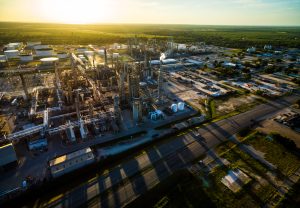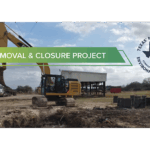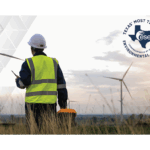
Environmental site assessments play a crucial role in ensuring the safety and sustainability of our communities. In the city of Broken Arrow, Phase 2 assessments have become an integral part of the process. Understanding the purpose and components of these assessments, as well as the regulatory framework that governs them, is essential for property owners, developers, and environmental professionals alike.
Understanding Phase 2 Environmental Site Assessments
Definition and Purpose of Phase 2 Assessments
Phase 2 environmental site assessments are a crucial step in evaluating and addressing potential environmental risks on a property. Building upon the findings of Phase 1 assessments, Phase 2 assessments delve deeper into the environmental conditions of a site, focusing on the presence and extent of contamination. By conducting a thorough investigation of soil, groundwater, and air quality, these assessments aim to provide a comprehensive understanding of any environmental hazards that may exist.
One of the primary objectives of Phase 2 assessments is to gather detailed data that can guide decision-making processes related to property development, remediation efforts, or compliance with environmental regulations. By identifying the nature and scope of contamination, stakeholders can make informed choices about the best course of action to protect human health and the environment.
Moreover, Phase 2 assessments play a crucial role in ensuring transparency and accountability in environmental management practices. By uncovering potential risks and contamination sources, these assessments help property owners, developers, and regulatory authorities work together to implement effective solutions that safeguard both public health and the ecosystem.
Key Components of Phase 2 Assessments
Phase 2 environmental site assessments encompass a series of essential components that collectively contribute to a comprehensive evaluation of environmental conditions:
- Initial Site Inspection: Environmental professionals conduct a thorough visual inspection of the site to identify potential sources of contamination, such as evidence of chemical spills, storage tanks, or other hazardous materials.
- Sampling: Samples of soil, groundwater, and air are meticulously collected from various locations on the property and analyzed by accredited laboratories. This process aims to detect the presence of contaminants, assess their concentrations, and evaluate potential risks to human health and the environment.
- Data Interpretation: The data obtained from sampling activities is carefully interpreted and compared against relevant regulatory standards and guidelines. This analysis helps in determining the level of contamination, assessing the associated risks, and formulating appropriate strategies for mitigation or remediation.
- Report Preparation: A detailed report summarizing the findings of the Phase 2 assessment is compiled, documenting the investigative process, data analysis results, and recommendations for further actions. This report serves as a valuable resource for decision-makers and stakeholders involved in managing the environmental aspects of the property.
The Process of Phase 2 Environmental Site Assessments in Broken Arrow
Initial Site Inspection and Sampling
The process begins with a thorough site inspection, where environmental professionals meticulously examine the property for signs of contamination or environmental risks. This visual assessment helps identify potential areas that require sampling and further investigation.
Sampling plays a critical role in Phase 2 assessments. Soil samples are collected from various locations across the site to analyze the presence and level of contaminants. Groundwater samples may also be obtained from wells or monitoring points to assess the potential migration of contaminants.
Laboratory Analysis and Data Interpretation
Once the samples are collected, they are sent to accredited laboratories for analysis. Highly trained technicians utilize state-of-the-art equipment to test the samples for a wide range of contaminants, including heavy metals, petroleum hydrocarbons, and volatile organic compounds.
The data obtained from the laboratory analysis is carefully interpreted by environmental professionals. They compare the results against predefined regulatory criteria to assess the potential risks associated with the contaminants present. This evaluation forms the basis for future decision-making regarding property development or remedial actions.
Regulatory Framework for Environmental Site Assessments
Federal and State Regulations
Environmental site assessments, including Phase 2 assessments, are subject to both federal and state regulations. The United States Environmental Protection Agency (EPA) establishes the guidelines and standards at the federal level, while state environmental agencies, such as the Oklahoma Department of Environmental Quality (ODEQ), enforce regulations specific to the state of Oklahoma.
Complying with these regulations is crucial to ensure the accuracy and reliability of Phase 2 assessments in Broken Arrow. The regulatory framework provides a structured approach to address potential environmental risks and protect the health and well-being of the community.
Compliance and Enforcement in Broken Arrow
In Broken Arrow, there are stringent mechanisms in place to ensure compliance with environmental regulations. Property owners and developers must adhere to the guidelines established by federal and state authorities to mitigate potential risks and protect the environment.
The local authorities work closely with environmental professionals and stakeholders to monitor and enforce compliance with environmental regulations. Regular inspections and audits help detect and rectify any non-compliance issues, ensuring the safety and sustainability of the city.
Impact of Phase 2 Environmental Site Assessments
Implications for Property Owners and Developers
Phase 2 environmental site assessments have significant implications for property owners and developers. They provide invaluable information about the environmental conditions of a site, enabling informed decision-making regarding property use, remediation strategies, and potential liability.
By identifying and addressing potential environmental risks early in the development process, property owners can avoid costly surprises, legal complications, and negative impacts on property values. Phase 2 assessments empower them to make environmentally conscious decisions that align with sustainable practices.
Benefits to the Environment and Community
Phase 2 environmental site assessments contribute to the overall well-being of the environment and the community. Identifying and mitigating environmental hazards helps protect air and water quality, preserves habitats, and reduces potential health risks to nearby residents.
By promoting responsible development practices, these assessments support the creation of healthier and more sustainable communities in Broken Arrow. They also enhance transparency and trust between stakeholders, ensuring that decisions are based on comprehensive and accurate information.
Challenges and Solutions in Conducting Phase 2 Assessments
Common Obstacles in Site Assessments
Conducting Phase 2 environmental site assessments can present several challenges. Limited access to certain areas of a site, the presence of buried contaminants, or complex geology are just a few examples. Overcoming these obstacles requires a combination of technical expertise, innovative approaches, and collaboration between environmental professionals and property owners.
Innovative Approaches and Techniques
To address the challenges encountered in Phase 2 environmental site assessments, professionals utilize innovative approaches and techniques. For example, advanced geophysical surveys can be employed to identify buried contaminants without extensive excavation. In-situ remedial techniques, such as the use of groundwater treatment technologies, can also be implemented to achieve more effective and sustainable results.
Staying abreast of industry advancements and applying cutting-edge technologies allows environmental professionals to overcome obstacles, improve assessment accuracy, and deliver the most cost-effective and environmentally responsible solutions.
In conclusion, Phase 2 environmental site assessments are an integral part of ensuring environmental safety and sustainability in Broken Arrow. These assessments provide comprehensive insight into the potential environmental risks associated with a property, guiding property owners and developers in responsible decision-making. By complying with federal and state regulations, adhering to best practices, and utilizing innovative approaches, environmental professionals play a crucial role in protecting the environment and creating healthier communities for the future.
If you’re facing environmental challenges or simply need expert guidance on Phase 2 Environmental Site Assessments in Broken Arrow or beyond, ESE Partners is here to help. Our team of skilled environmental engineers and scientists is dedicated to providing innovative, sustainable solutions tailored to your unique needs. With a commitment to improving community quality of life and a deep understanding of environmental regulations, we’re equipped to support your assessment, remediation, and compliance efforts. Don’t let environmental concerns hold your business back. Request A Proposal today and partner with us to move your business forward responsibly.








